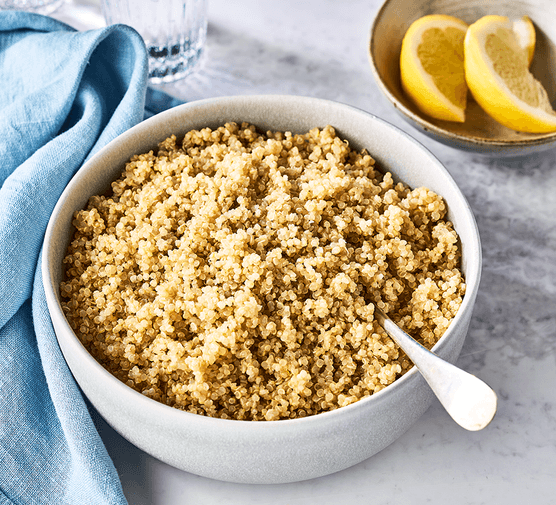The plate of a Peruvian kitchen and the salad bowl of a health enthusiast in the U.S. share a key ingredient: quinoa. Quinoa hailed historically from the highlands of Peru, Bolivia, Ecuador, and Chile. The indigenous people of the Andes enjoyed this grain in their cuisine throughout the year as quinoa survives cold weather [1]. Andean linguist and food scholar Alison Krögel comments that Peruvians consider it “low prestige” while Americans and Europeans fell in love with the grain. New recipes proclaimed as easy and healthy usw quinoa (consider these non-Peruvian adapted recipes), while Peruvian dishes already listed it as a component. Quinoa represents a link to Peruvian cultural heritage even as it develops new cultural meanings in a global marketplace.

The Pantry Staple
Quinoa in the Peruvian household claims multiple long-established roles. According to Krögel, due to its high protein, fat content, and essential amino acids, quinoa developed as a staple in Andean cooking [2]. Quinoa struggles to garner the acclaim that other more well-known staples like corn and potato. However, it elevates many common Peruvian dishes. In Fire of Peru: Recipes and Stories of My Peruvian Kitchen, Chef Ricardo Zarate adds quinoa in stews, salads, and stir-fries instead of rice [3]. The wide breadth of quinoa dishes reflects a mixed Peruvian culture. Zarate himself shares a recipe for Chaufas, deemed Peruvian fried rice, in which he substitutes quinoa for rice. This dish exemplifies how the Chinese in Peru kept recipes from their homeland with limited ingredients. Quinoa also serves as a folk medicine and pest-killer in Peruvian households. The leftover water from washing quinoa kills lice, and the ash from quinoa’s burnt stalks acts as a narcotic [4]. Household tricks like these emerge from ancestral knowledge.
Although common grocery stores stock quinoa, quinoa bought in a Peruvian market avail the shopper of a rich heritage kept alive by market vendors. Peruvian markets date at least to Spanish rule as women learned to navigate the Spanish trade system to sell products to support their families and make tribute [5]. These markets developed as the hub for produce, foodstuff, crafts, and gathering. One visits the market to buy their quinoa but leaves after interacting with different cuisines and trades. Krögel calls the vendors that sell dried goods like quinoa “one-stop shopping.” These vendors survived on the market for decades and inherited their market spots from mothers, aunts, and grandmothers [6]. Due to familial heritage, women dominate the sale of dried foodstuff like quinoa in Peruvian markets. This consolidated role reveals itself in the knowledge that a vendor provides. Krögel discusses a sixty-two-year-old vendor of dry goods, Elisa, who takes pity on young cooks and reminds them to wash their quinoa properly [7]. She offers essential knowledge to the novice even if the more experienced shopper knows it as common sense.
The Hot Item on the Global Market
Quinoa outgrew its homeland and gained acclaim in global culture due to its nutritious benefits. The United Nations praised the grain and its potential to combat global hunger and crop failure in other countries outside Peru. In the nineteenth century, the media began promoting quinoa as a superfood substitute for grains, making up bread recipes [8]. Quinoa lovers failed at first in marketing the grain as this idea proved unfeasible, but quinoa now appears in a variety of recipes in American and European diets.
Global interest in quinoa changes how Peruvians enjoy and access the grain. While growing in favor outside of Peru, Peruvians report that they consume less quinoa than previously. Quinoa dishes now more frequently thrive among tourists and the elite restaurants of Peru [9]. Increased prices reflect the increased global demand. These prices threaten to disrupt lower class Peruvians’ access to quinoa and their cultural reliance on the grain if prices continue to rise.
Once a nutritious grain entrenched in Peruvian cuisine and culture, quinoa evolved into an ingredient of global renown. The grain’s multitude of uses allowed it to transverse cultures in Peru and globally. It makes its mark as both stable and capable of enriching domestic and global cultures. A plate of quinoa globally represents the spread of culture to global acclaim.

[1] Alison Krögel, “A Brief Cultural History of Andean Staple Foods,” in Food, Power, and Resistance in the Andes: Exploring Quechua Verbal and Visual Narratives (Lexington Books, Plymouth, UK: 2011), 29.
[2] Krögel, “Brief Cultural History,” 29.
[3] Ricardo Zarate and Jenn Garbee, The Fire of Peru: Recipes and Stories from My Peruvian Kitchen (Boston and New York: Houghton Mifflin Harcourt, 2015), 200.
[4] Krögel, “Brief Cultural History,” 29.
[5] Alison Krögel, “Profits, Prestige, and Power in the Andean Market and Chicheria,” in Food, Power, and Resistance in the Andes: Exploring Quechua Verbal and Visual Narratives (Lexington Books, Plymouth, UK: 2011), 75.
[6] Krögel, “Profits, Prestige, and Power,” 83-84.
[7] Krögel, “Profits, Prestige, and Power,” 85.
[8] Matthew Turetsky, “Quinoa: Rise of an Andean Superfood,” JSTOR Daily, November 24, 2023, https://daily.jstor.org/quinoa-rise-of-an-andean-superfood/.
[9] Krögel, “Brief Cultural History,” 29.

